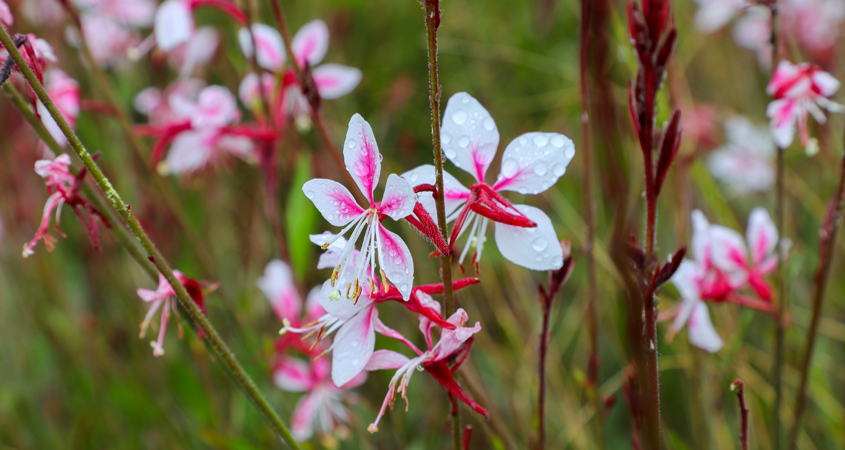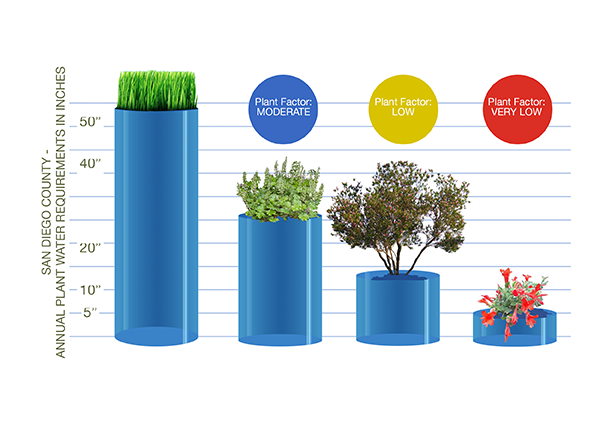 Beeblossom (Gaura) shrubs are a good low water use landscaping choice based on its Plant Factors rating. Photo: Water Authority
Beeblossom (Gaura) shrubs are a good low water use landscaping choice based on its Plant Factors rating. Photo: Water AuthorityKnowing Your Plants’ Water Needs
Landscaping professionals use a resource called the Water Use Classification of Landscape Species (WUCOLS) to classify plants according to their water needs.
It might sound really complex, but it’s really useful because it breaks down the water requirements for each type of plant into four categories: Very Low, Low, Moderate, and High. These water requirements are also called Plant Factors, and they are an important tool for transitioning to a more water-efficient landscape.
Water Requirements by Plant Factors
To come up with a Plant Factor for a given plant, that plant’s water use is compared to cool season grass in a given climate zone.
Why is that? Turf is among the thirstiest of all types of plants. When you replace turf areas with climate-appropriate plants with lower water requirements, and irrigate them with more efficient systems, you can realize a tremendous amount of water savings. There is no need to turn your landscaping into a dry, brittle moonscape to do it.
Here are the Plant Factors, or PF, categories:

Plant Factor categories from high to low water use. Graphic: Water Authority
High: These plants need from 60 to 100 percent of the water needed for a grass lawn (PF of 0.6 – 1.)
Moderate: Plants need 30 to 60 percent of the water needed for a grass lawn (PF of 0.3 – 0.6)
Low: Plants need 10 to 30 percent of the water needed for a grass lawn (PF of 0.1 – 0.3)
Very Low: Plants need 10 percent or less of the water needed for a grass lawn (PF of less than 0.1)
Group Plants by PF to Irrigate More Efficiently
In the Water Authority’s Sustainable Landscaping guidebook, plant selections are color-coded to identify their water needs under this system. That approach provides an easy way to group plants by their water requirements in your landscape, so you can irrigate more efficiently.
This article was inspired by the 71-page Sustainable Landscapes Program guidebook available at SustainableLandscapesSD.org. The Water Authority and its partners also offer other great resources for landscaping upgrades, including free WaterSmart classes at WaterSmartSD.org.



